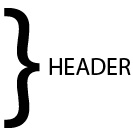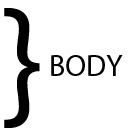How to write an Inquiry Letter
How to Write an Inquiry Letter
Writing a letter of inquiry can become an easy task when you have some guiding material.
An enquiry letter may consist all or few of the below mentioned parts:
- Introduction
- Description
- Statement
- Methodology
- Final Summary
The inclusion or exclusion of certain components depends on the scope of your letter. Business letters will tend to have all mentioned while those on a smaller platform will include few. Not to forget that these letter are formal letters and will follow the rules pertaining to these. These rules refer to the common styles of writing a business letter, i.e. Full Block Style, Modified Block Style and others.
An example of letter of inquiry or a letter of inquiry format is sufficient. To add to it the writing tips provide efficiency. Thus, it is advisable to go through the format, tips, examples and the templates.
Inquiry Letter Writing Tips
- Outline and Organise your Inquiry – By outlining it is meant that you have to know what sort of information you are going to present?, word limit, documents required, the tone of the language, your anticipation, common ground of consensus and other required matter. It is just like an architecture preparing a building plan. Here you have to decide ‘What to include?’ and ‘Why to include?’ Knowing this eases the writing process and also eases the reading on part of the recipient. When all the pieces are clear in your mind, it is time to figure out the best possible logical order. Arrange a sequential order for the relevant information. In this way outlining and organising eases the further writing process.
- Gather Information – Certain inquiries may not require any search or research, certain will. For the latter one’s you have to collect information to make your case strong. If you are looking for a job, you need to know the expectations of the employer. If it is a fund that you are writing for, know your client. Research your recipient; know the principles on which they work. Analyse their intellect and weaknesses. Any information which will support your inquiry is good. It might appear daunting but you don’t need to go into all areas. Pick one or two and research on that. There are other indirect methods like visiting the websites, going through profiles, news items and other assistive methods. Knowing and delivering the anticipated speeds up the writing and the success of the inquiry. On your part you might be required to provide information to the recipient and that too needs to be sorted out before it is presented.
- Drafting – A formal letter like query letter begins from a draft. The draft maybe required for your own acceptance or for the organisation you are working for. The initial step of outlining and organising comes to aid in the draft. The logical order and the information collected are put to full use in drafting. Ideas or lines may come hard, so start with what comes first in the mind. Then weave the inquiry around it and prepare your letter. Though the layout has been planned but the content may not always live up to the layout. Drafting is a good option because you may not always come up with a good letter and you require certain revisions or consultations with your seniors. Here, you can experiment and chalk out a format for future use.
- Appropriate Recipient – Your inquiry may not yield the desired results if you are in doubt about the exact recipient. You may know about multiple recipients but who is the one, that is most likely to respond in a positive and helpful manner. To solve this query you can contact the recipient’s office and find out who is the most appropriate. For indirect methods you can use previous correspondence containing letterhead or recipient’s name. The company’s website can also be helpful in this matter. Never address your inquiry letter to a ‘Department’, ‘Head of Department’ or ‘To whom it may concern’. An individual will read your letter and this individual represents the department. So always direct your letter to 'A Person having Authority' and 'Not to Authority having a Person'.
- Impressive Opening – Inquiry letter being a representative to many types of other letters requires an impressive opening. It may not be the agenda of all inquiry letters but wherever it is applicable, you have to impress the reader. To arouse the interest you can state the profit involved in the query. You should write in an active voice and offer relevant facts. The letter should live up to the anticipation and expectations of the reader, making it effortless to read. You can also use certain apt phrases and quotes towards this effect. You can flatter the recipient with certain praises but don’t exaggerate. Self introduction in the starting itself wouldn’t be a good idea so refrain until it is anticipated.
- Be Specific and Brief – It makes sense to be specific and brief. Specificity of your letter will lead to easy perception of the information. Brief letter will be read quickly and wouldn’t appear as burdening. Moreover, there is no scope for anything apart from the request and its relative aspects. You can be specific by offering the most important information; one which will fulfil most of the needs of the reader. You can be brief by using short paragraphs and using one word whose meaning is equivalent to a number of words. Mostly an inquiry letter is of 2 to 3 pages.
- Be Straightforward – Straightforward doesn’t mean a simple go. You have to be direct but by remaining within the boundaries of etiquettes. You shouldn’t sound cold and boring. You have to be professional and follow all the observances expected from an inquiry letter. For, example you shouldn’t condemn, be sarcastic or arrogant. One may not realise it but when others read it, they can point out the anomalies. So build a momentum instead of directly coming to the objective of the letter.
- Generate and Maintain Interest – There are many ways of presenting information. It is up to you how you present it. You can utilise a question to arouse the curiosity of the recipient. You can maintain this interest by providing some hints as to what you have written next. Don’t lose the momentum of the tone as it can reduce the interest. Present your idea which forces the person to imagine a scenario.
- Supportive Documents –Don't forget to attach the required documents. These documents are supportive towards your cause. For a prospective employee these add value to the credibility of the individual. In a business scenario it is complimentary and well thought idea. They also augment the effect of the letter.
- Facilitate the Response – When you seek information which is more essential to you than it is to the reader, you are required to ease the reply process. So enclose a self-addressed stamped envelope with your query. Even, otherwise it shows your presence of mind, willingness to ensure smooth and quick response. If the inquiry is more beneficial to the recipient, your contact number and other details are already there on the letterhead.
- Offer Incentives – When you make it obvious that the inquiry is beneficial to the recipient, it acts as an incentive. If you make it clear – ‘The How’ and ‘What’ of the desired outcome of the letter, it also serves to offer an incentive. You can emphasise the role of the reader in the inquiry and how it will add up to his credentials. You can use examples towards this effect; a profit to the recipient does go long down the line.
- Review and Revise – Coming to the final section, double check the address. Your letter should have all the qualities of being a professional one. Ensure the use of simple font such as Times New Roman or Arial. Check for any spelling and grammatical errors. If in doubt get a reliable proofreader to review it.
Inquiry Letter Formats
Inquiry Letter Format - Full Block Style
|
Organisation Letter Head OR Your Name Your Address (can be positioned only to the left) Date Recipient's Name (specific official or person) Recipient's Address Reference or Subject (as required) Dear Recipient (Salutation) First Paragraph – Details of the Inquiry Second Paragraph – Brief history, suggestions, statistical data etc. Third Paragraph – Offer assistance towards communication and assistance
Subscription – Thanking you, yours sincerely etc. Your Signature Your Typed First Name Last Name Your Designation (as required) |
Inquiry Letter Format - Modified Block Style
|
Organisation Letter Head Your Address (should be positioned to the right) Date (should be positioned to the right) Recipient's Name (specific official or person) Recipient's Address (can be positioned only to the left)
Reference or Subject (as required) Dear Recipient (Salutation) First Paragraph (aligned left) – Details of the Inquiry Second Paragraph (aligned left) – Brief history, suggestions, statistical data etc. Third Paragraph (aligned left) – Offer assistance towards communication and assistance
Subscription – Thanking you, yours sincerely etc. Your Signature Your Typed First Name Last Name Your Designation (as required) ENCL (optional) stands for ‘Enclosure’ |



